Aside from inquisitiveness, it would be nice to have a simple test to compare various pellets at various velocities as to their probable effect.
Fairly crude but here it is:
The first stage was done some time ago and some readers may remember this result. A slip of 200 gm cardboard was inserted into a deep incision beside the breast bone of a pest Myna bird ( still hot ) and shot through with a Predator pellet. Left click to open for later comparison ( Graphic ) and to view the cardboard after removal:
http://img.photobucket.com/albums/v392/ ... Eexper.jpg" onclick="window.open(this.href);return false;
Note the lower cardboard was placed behind the bird. The exiting pellet then went through it and into raw sheep's fleece for retrieval.
Today and at a similar distance I set up The Great Aussie White Water Trough in abbreviated form. A frame with a sheet of 200 gm cardboard ( same as in the bird above ) was slotted in at approx the same distance as the bird test at a tad under an inch from the POI at the air-to-water interface :
Tank from pellet’s eye view as it would enter the small hole sealed on the inside with cling wrap.
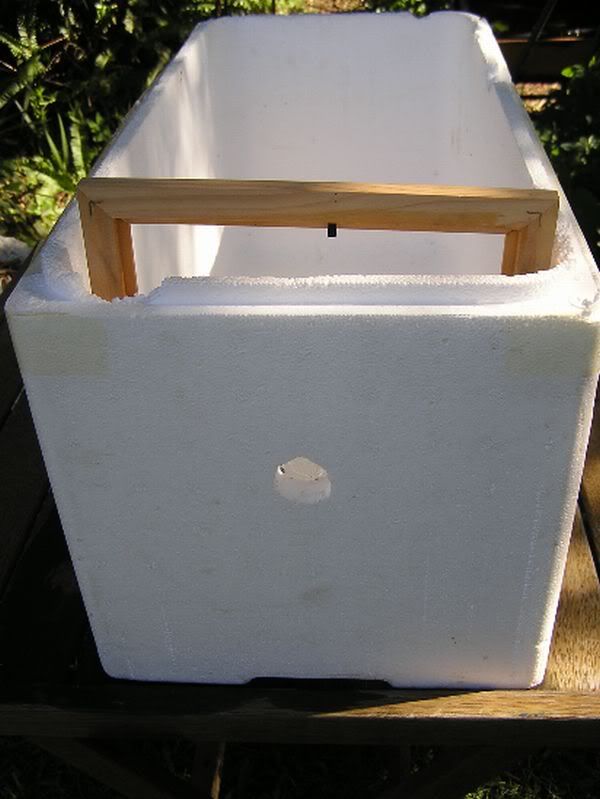
Trough from the far end looking back at the frame and pellet entry window. Trough minus water and cardboard which slots into the frame:
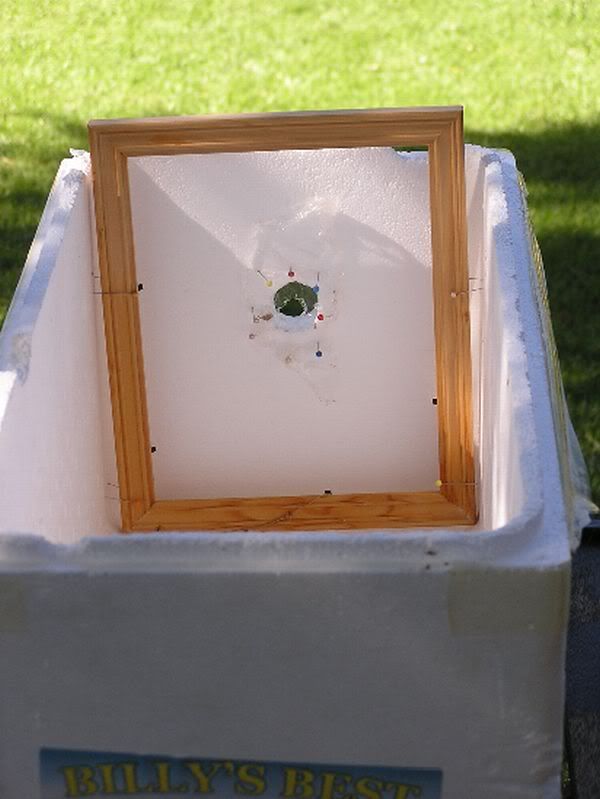
The Trough was filled with water and two pellets were shot, a Predator poly tip .22 of 16 gr and a JSB 15.9 gr Exact .22 cal.
Of course the tank had to be re-filled, a new "target" slotted in and the window re-covered between shots… From the original water Trough tests of some years back I knew that a JSB Exact will travel 60 inches/ 5 feet horizontally through water from the Excalibre at a somewhat lower muzzle velocity than this test. As this tank was only 20 inches or so long, I placed a lead plate at the far end in the tank for the JSB Exact shot. ….. The tank was located at 22 yards and the mv was 1025 to 1030 fps for the two shots and at the POI velocity was about 910 fps and 33+ fpe for the Exact, a little less for the Predator pellet.
Result: The cardboard on the left is the Predator result; that in the middle is the JSB Exact result and on the far right of the third sheet is the hole stamped by the Exact into the sheet covering the lead plate at 18 inches horizontally from the pellet entry port.
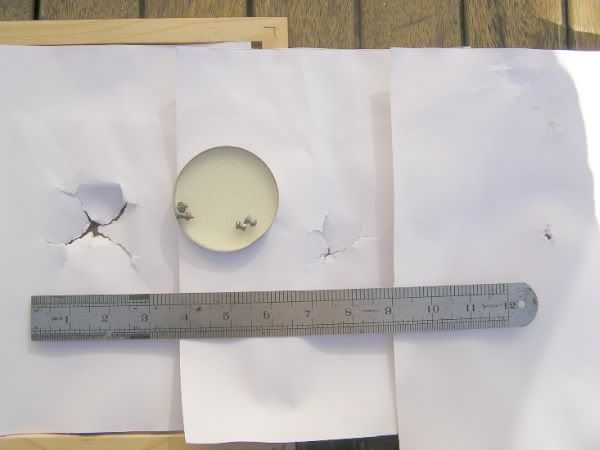
The extent of the damage done by the displaced water pressure was approx 3 inches maximum diameter for the Predator and 2 inches maximum for the JSB Exact.
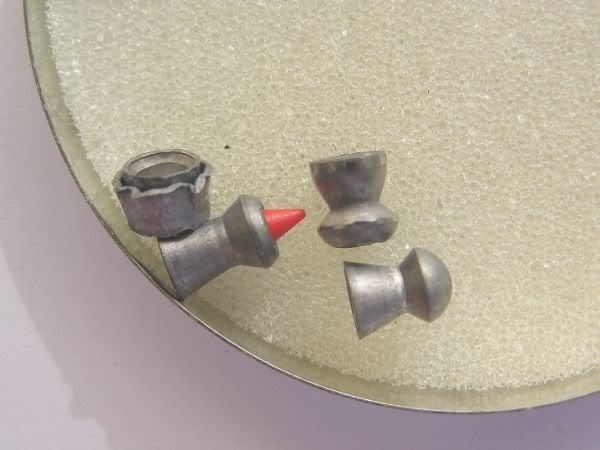
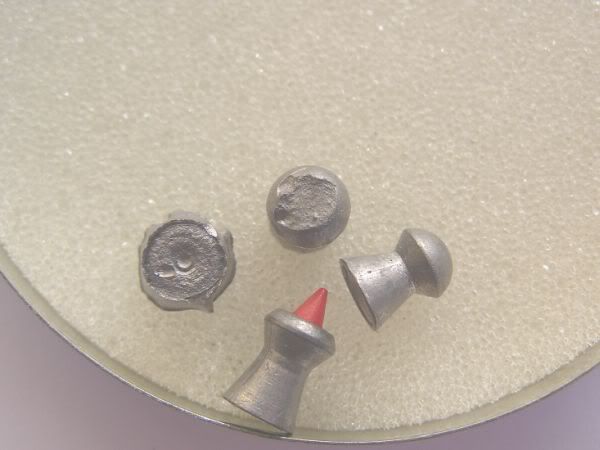
Note that the Exact still had sufficient energy to flatten its point on the lead sheet at the far end of the trough.
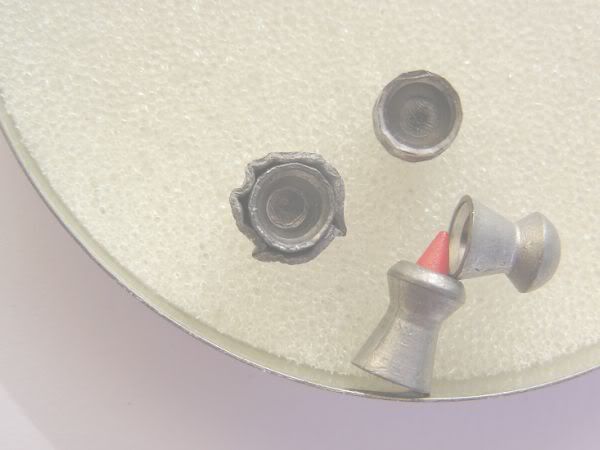
However though the Predator expansion diameters of the bird and water test Predators are same at 0.30+ inches, the expansion profile is quite different. Here is the pellet from the Myna bird shot seen with a normal Predator shot straight into wool fleece:
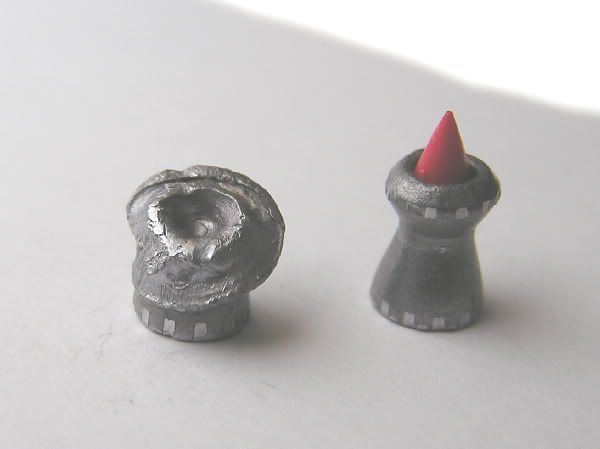
Discussion: Certainly the fluids from all sources and compartments within the first inch of the bird together with some other bits of tissue tore a significant hole in the sheet that was slotted in beside the breast plate.
There is however a bigger tear in the Predator sheet from this water tank test.
The Predator expanded to a frontal diameter of 0.31 or 7.89 mm in the water trough. As in all other water tests the Exact did not expand and retained its point on stability all the way to the lead plate. ( In earlier tests even at 5 feet of horizontal water travel the exacts always retained a point-first attitude with no semblance of tumbling ).
The expanding Predator did make the bigger area of damage encompassing an area of 7 square inches compared to say 3+ square inches for the JSB Exact.
.
There would have been some other pellets tested, but it is amazing how much time can be spent on these things and the clean up was only managed just before the lady was due home from her meeting ! ……………..
Prior to the test I shot 5 Predators at 25 metres for group at this high velocity, 1025 fps from the JB OZ 1 BSA Hornet::
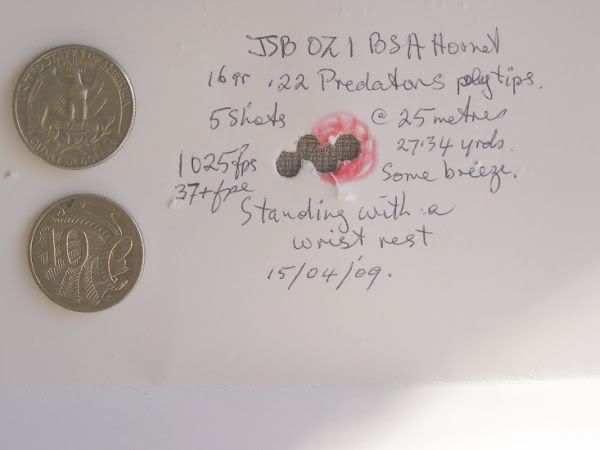
These pellets seem to be able to be pushed to very high velocity and not lose precision.
Kind regards, Yrrah.
